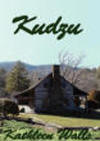Fayette
Historical State Park and Townsite
Story
and Photographs by Tom Straka
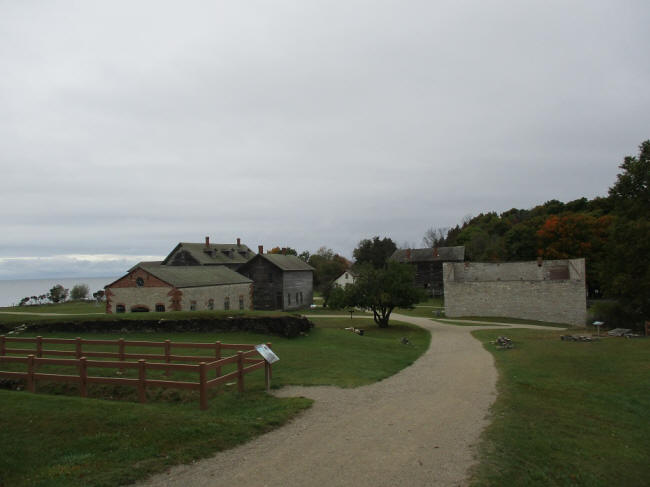
Michigan’s Upper Peninsula has lots of fascinating towns and
museums to visit. Many of the museums are related to the
region’s pioneering industries: copper, iron, and timber. The
Upper Peninsula once had huge iron resources and over two-dozen
iron blast furnaces, and many of the museums and historical
attractions deal with the iron mining and smelting industries.
The fuel for nearly all of the iron smelting furnaces was
charcoal, and if you look hard you can even see some charcoal
kilns that still remain to celebrate the iron industry history.
Marquette was center of the iron activity and if you enter town
from the east, you’ll see a huge, reconstructed charcoal kiln
to welcome you to the city.
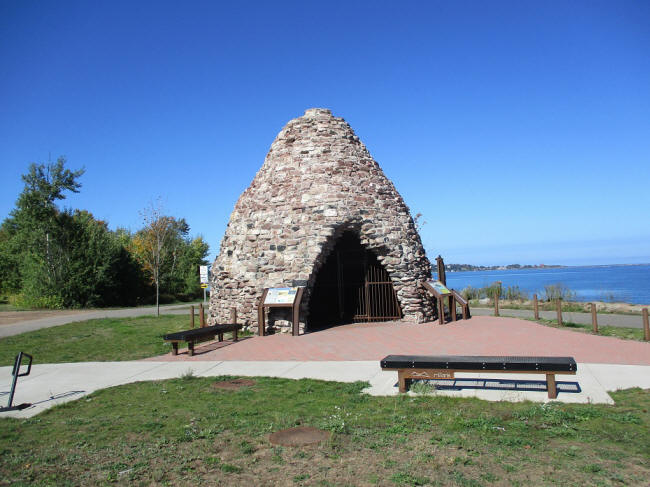
Charcoal kiln that welcomes visitors
to Marquette, prompting questions on its function, creating an
opportunity to explain the Upper Peninsula’s iron mining and
smelting history.
While the iron ore was near Lake Superior and Marquette, better
access to eastern smelters was available via Lake Michigan if
the ore could be moved south. In 1864 the Peninsula Railroad
was completed and provided that access. Ore could be moved
south from Negaunee (just south of Marquette where the mine
was) to Escanaba on Lake Michigan. The Jackson Iron Mining
Company in Negaunee began to transport iron ore to Escanaba in
1865 and from there to Cleveland, Ohio in a ship named Fayette
Brown, which could make the round-trip in just over eight days.
Shipping ore from Escanaba to foundries further east on the
Great Lakes was expensive, especially since the ore was 40
percent waste material. The answer to the problem was to build
a blast furnace to convert the ore into pig iron prior to
shipping to iron and steel plants on the Lower Great Lakes. The
furnace location needed to be close to Escanaba’s ore docks,
possess a natural harbor, and have access to local limestone
and hardwood forest resources.
In 1867 the Jackson Mining Company acquired 26,000 acres of
hardwood timberland east of Escanaba and that timber would be
converted into charcoal to fuel an iron furnace. The furnace
was built about 20 miles to the east (by water) of Escanaba at
a location named Fayette, constructed on a peninsula with a
natural harbor and limestone cliffs. Ore was shipped from
Negaunee to Escanaba, then loaded onto scows and towed to the
furnaces at Fayette where it was smelted into pig iron.
Charcoal kilns would be built at the furnace and in the nearby
forests. The location would become a townsite. The town became
an iron furnace company town, a community that supported the
smelter activity. It operated from 1867 to 1891 and produced
nearly a quarter-million tons of iron. A changing iron economy
and exhausted timber resources were the reasons for the furnace
abandonment.
Fayette hung on for a while after the furnace closed, but
eventually became a ghost town.
Later, it was recognized as one of the best-surviving former
iron furnace communities and acquired by the state to become a
historical park.
Today there are over 20 well-preserved buildings and structures
that present a picture of what the community looked like. The
second Saturday in August is Fayette Heritage Days with period
displays, food and music.
Since
Fayette
was an iron manufacturing community, the center of activity in
the town was the two large blast furnaces (or stacks), a
battery of charcoal kilns, a lime kiln, and a large dock. The
hot blast was provided by machinery housed on the upper level
of furnace complex. Steam was produced by boilers and sent to
blowing engines which provided the blast to the furnace. The
fuel was charcoal from the nearby hardwood forests and
limestone was quarried from the nearby bluffs. An
interpretative sign notes: “The furnace complex was the heart
of industrial Fayette. Here, the heat, roar, and odors of the
smelting operation merged with the shouts of men, whir of
engines and shill scream of steam whistles.”
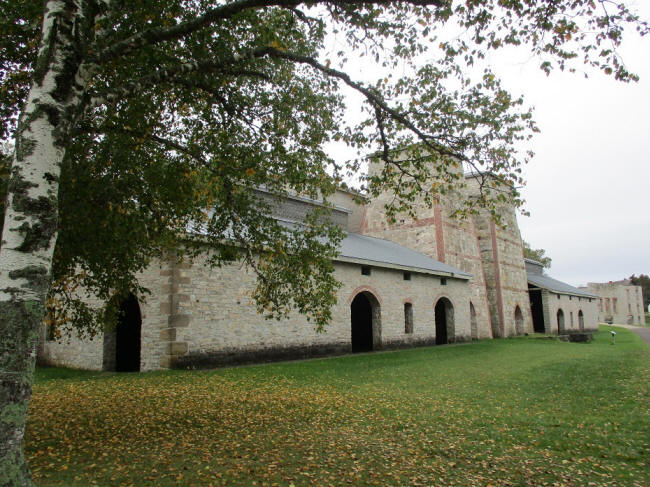
The two blast furnaces and furnace complex, the productive heart of the community.
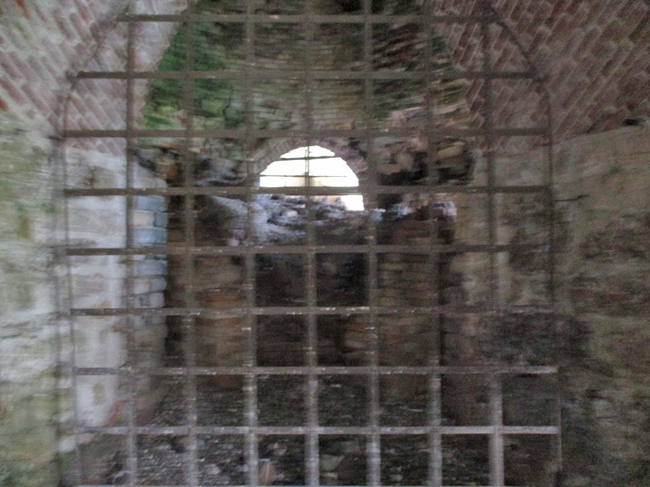
Inside one of the blast furnaces, where action took place.
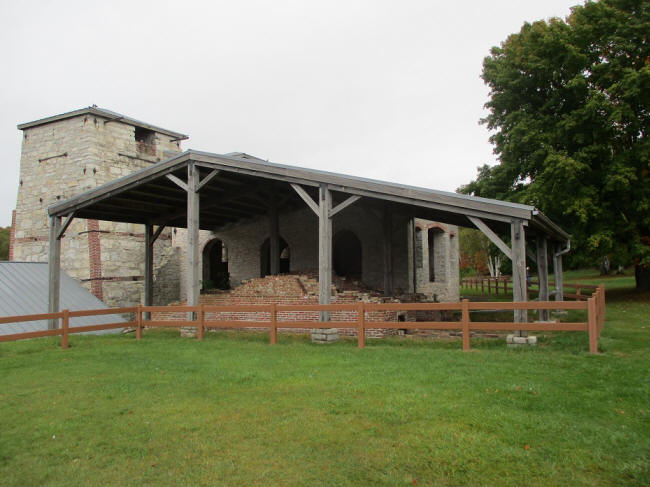
The back of the stacks or blast furnace, elevated for access to
the stacks. These sections of the furnace complex housed the
machinery which powered the foundry’s hot blast. Boilers
supplied steam to the blowing engines which forced air through
the hot blast ovens and into the furnaces.
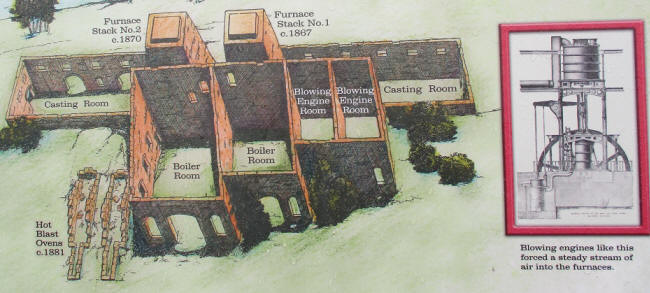
Illustration
of the furnace complex from interpretative sign.
Fuel was crucial to the operation. At first charcoal was
produced in rows of large rectangular charcoal kilns. The
rectangular kilns proved to be unsuccessful and were replaced
by more productive conical
charcoal kilns.
A row of ten conical kilns was next to the furnace; none
survive and a reconstructed kiln now represents that battery of
charcoal kilns. An interpretative sign next to the kiln states:
“Colliers manufactured charcoal to fuel the furnaces at a row
of kilns, like this reconstruction. The company also operated
kilns on the Garden Peninsula and contracted with private
operators to provide charcoal. By the mid-1880s, more than
eighty kilns were in operation within ten miles of Fayette.”
Shortages of fuel were always issues at the charcoal iron
furnaces. In 1870 the Escanaba Tribune reported: “Fears
were entertained that the supply of charcoal would fall short,
but with extraordinary exertions, they now have another set of
kilns ready, and the supply will be kept up.”
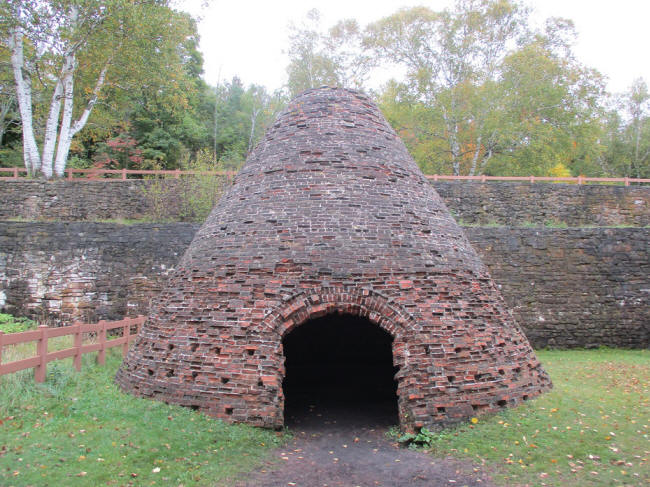
The reconstructed conical charcoal
kiln, imagine a row of them and the smoke they created.
A warehouse and general store was built in 1879. The store had
a captive market and did not always offer competitive prices. A
fire in the early 1900s destroyed the store and today only
stone walls remain. As to costs at the company store, one
shopper described the pricing policy as “pluck me.” The
interpretative sign at the machine shop states: “Machinists
like Louis Follo maintained Fayette’s industrial equipment from
this shop. Power machinery, used to manufacture equipment
parts, was driven by steam piped from the furnace boilers.
Master mechanics were paid $75 per month. Machinists like Follo
earned $1.80 per day.”
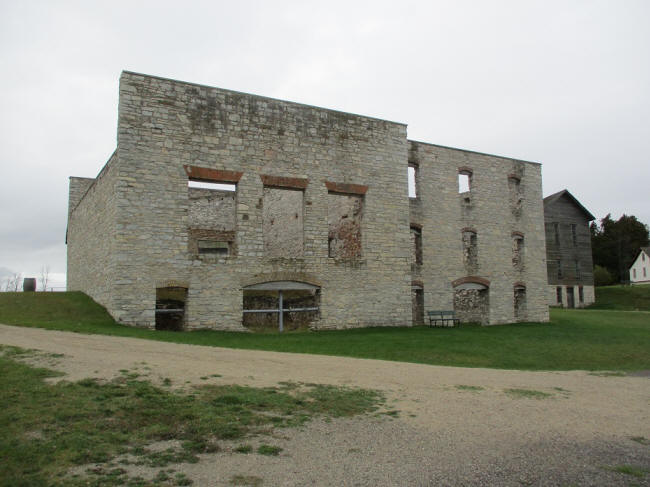
The skeleton of the company store complex.
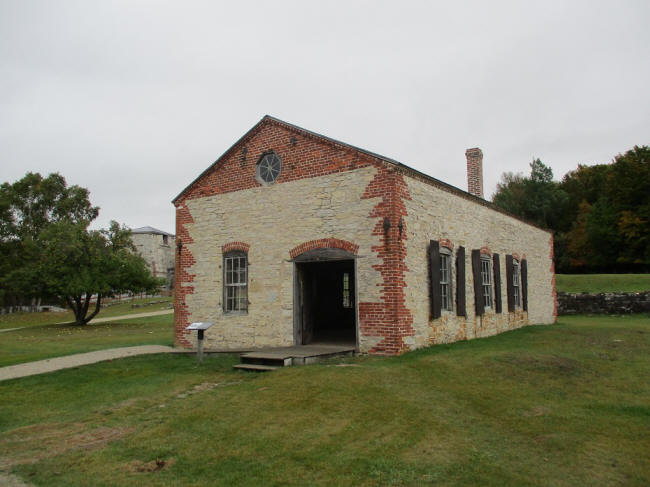
The machine shop still survives.
A cluster of buildings remains and inside visitors can get a
glimpse of what life was like when Fayette boomed. An
interpretative sign states: “Fayette was a company town whose
residents depended on the Jackson Iron Company for jobs,
housing, medical care, and supplies. From 1867 to 1891 the
furnaces at Fayette produced high quality charcoal iron for
America’s steel industry and supported a bustling immigrant
community of nearly 500 residents. Today, twenty structures,
including the furnace complex, business district and employee’s
homes, recall the daily life of this industrial community.”
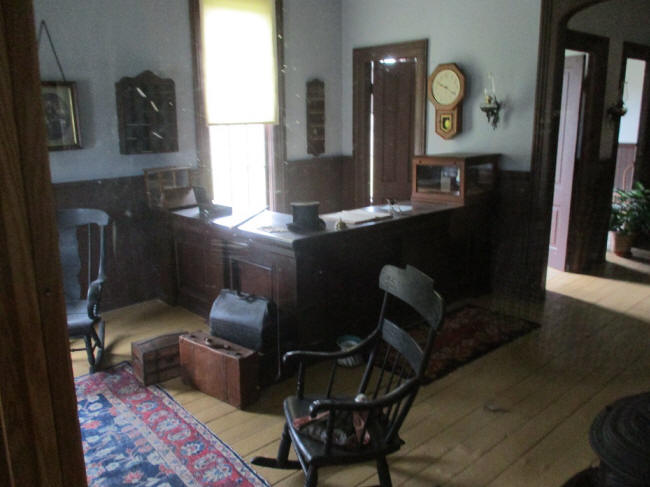
The
hotel is still in Fayette and the desk is ready for check-in. A
second-floor washroom featured a bathtub and sinks, with hot,
running water piped underground from the furnace complex. Hotel
guests used a two-story outhouse, accessed from the second
floor by a wooden walkway.
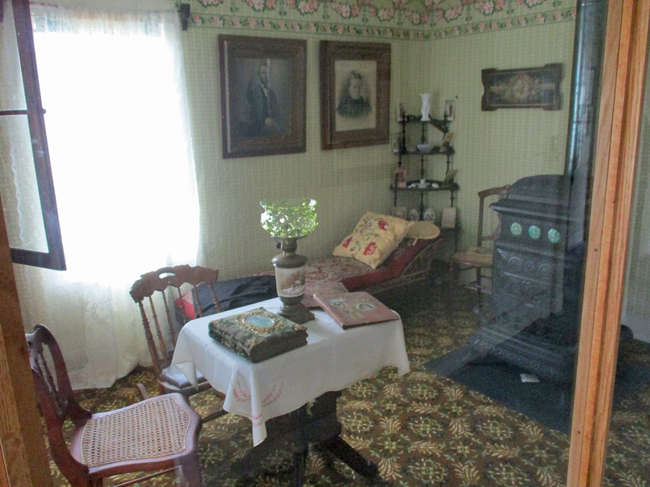
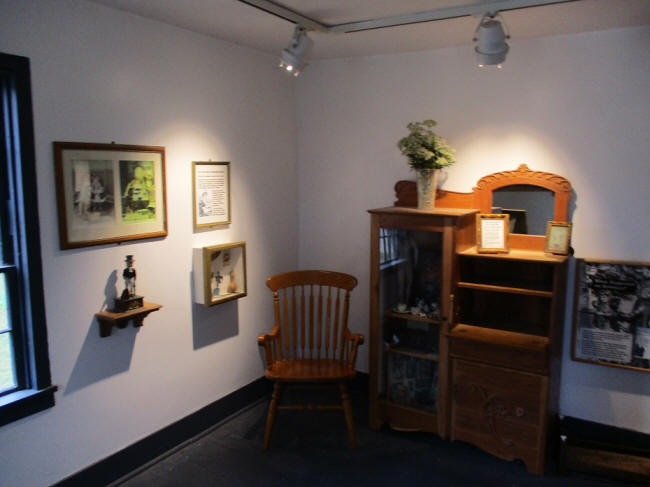
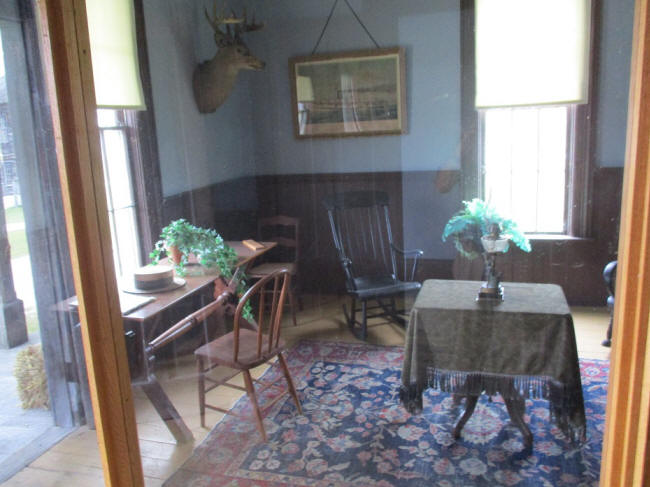
Typical middle class home at Fayette. Furniture would have been
shipped in from Escanaba.
Fayette Historic State Park is a must-see Upper Peninsula attraction. Its only a few miles off the main U.S. highway for travelers following the Lake Michigan coastline. The history of the region is tied to the iron industry, and this is the place to experience that history.
Author: Thomas J. Straka is a forestry professor emeritus at Clemson University in South Carolina. He is a regular contributor with an interest in history, natural exploration, and unusual sites.
























